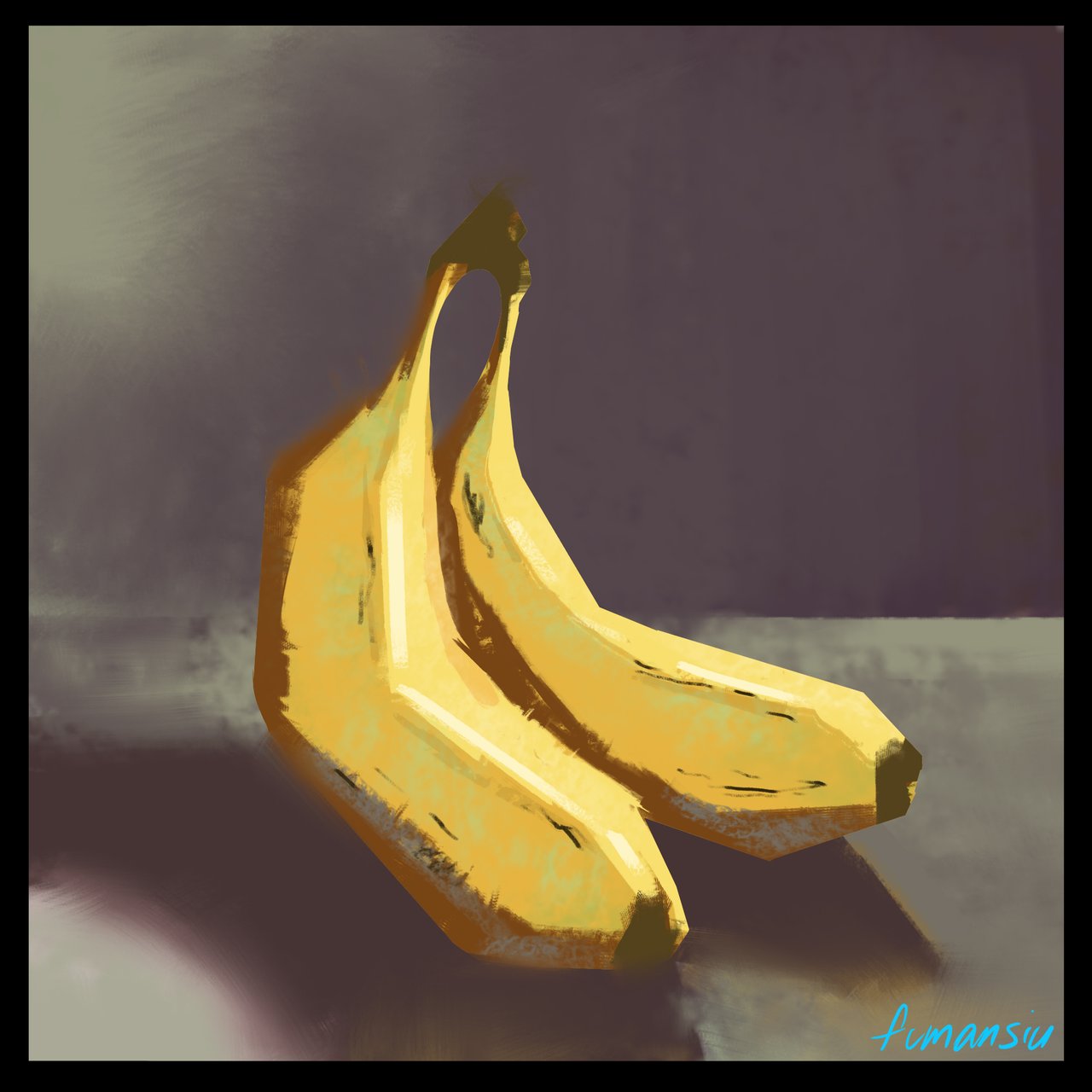
Welcome back! It's banana time again. In order for us to really cement the idea of banana in our heads we are going to do a second study of the same banana scene, only this time we are NOT going to use the reference. From the last study I'm sure you remember some of the color choices you made and the shapes that defined the bananas. For this round we are going to rely on our memory of the first study to kind of test ourselves. In this way we can find out if we understand our subject or if we need to go back and do another study with reference.
Banana 1 if you want to go over the first study again.
I recall the bananas having a kind of tube-y/cube-y shape with a curve so I am going to sketch out what I remember from last time. It's okay to be messy here, we are just trying to find the major shapes and give ourselves some guide lines for the painting.
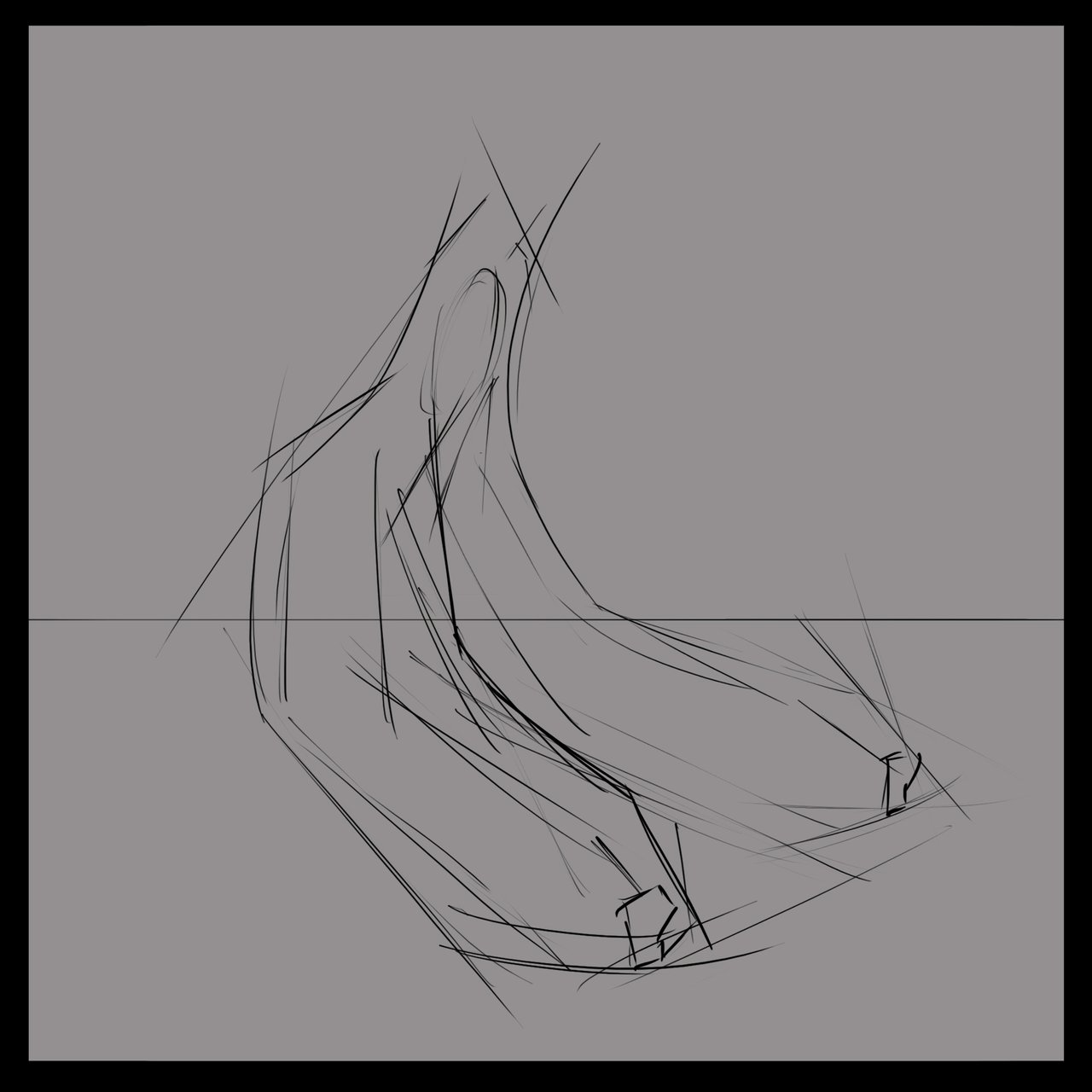
Next up we've gotta fill in our shape with the base color of our item. In the case of banana I am looking for a very yellowy yummy looking color. For me this is this very saturated yellow. Because we don't have a reference this time we have to rely on our brain and are going to do our best to remember about what yellow a banana has and aim for that.
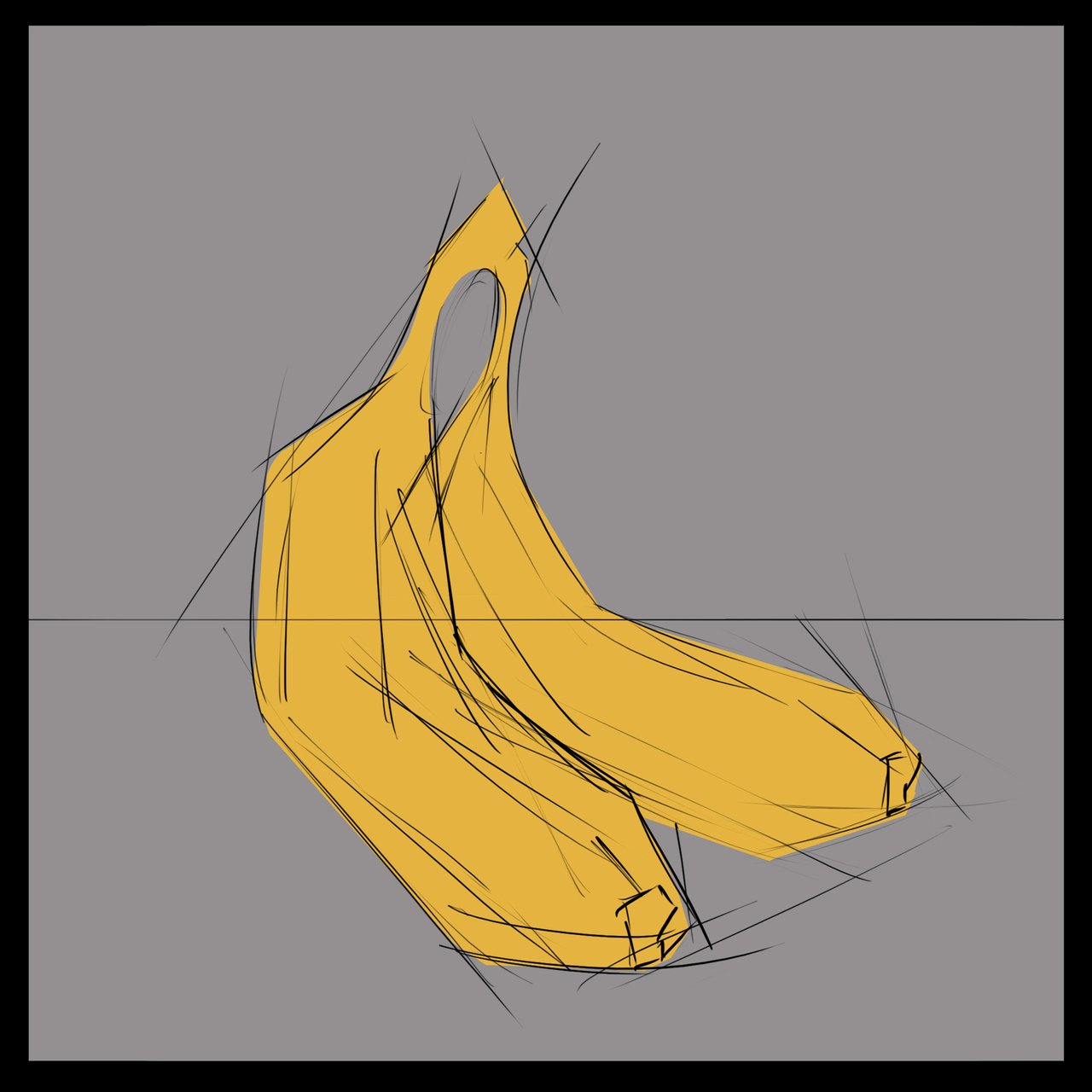
To define our shadow side and light side we are going to use our formula from before. About halfway to black and a little warmer for the shadow and about a quarter toward white and slightly cooler. This should give us some nice variation of color and be fairly convincing. I remember there being some green ish areas near the stem and bottoms of the bananas so I've added that in gently as well.
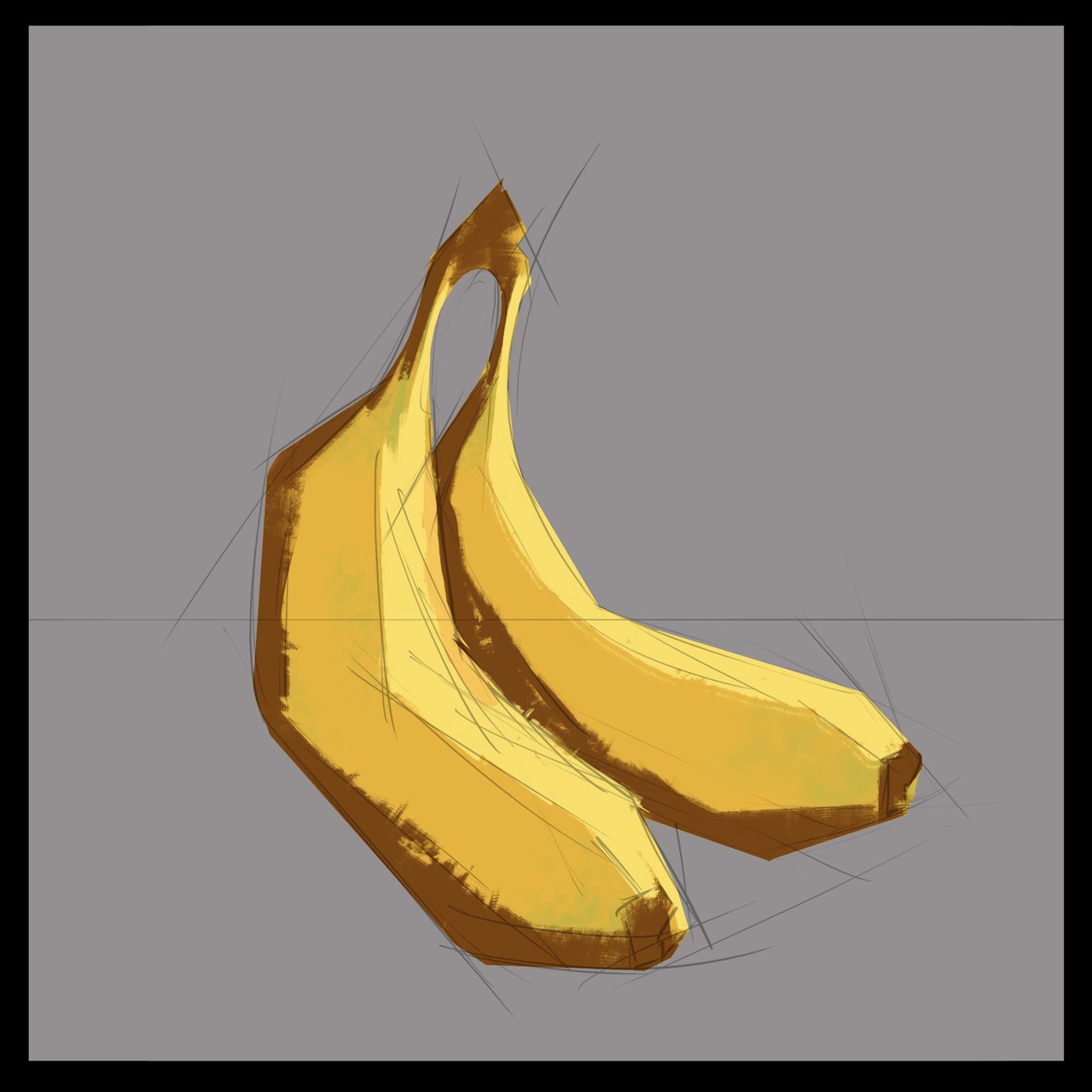
I'm pretty happy with what I've got so far on the banana so I'm moving on to the background. In this case because I have no reference I've decided that I want to try and play a little bit with color for this background. I know from the color wheel that yellow's complimentary color is purple, so I want to try and throw in lots of de-saturated purple-ish tones to try and pump up the effect of the yellow. Other colors you could try might be shades of blue or even green. This is a chance to experiment with some more neutral versions of colors that compete with yellow to see if we can make that yellow even more exciting.
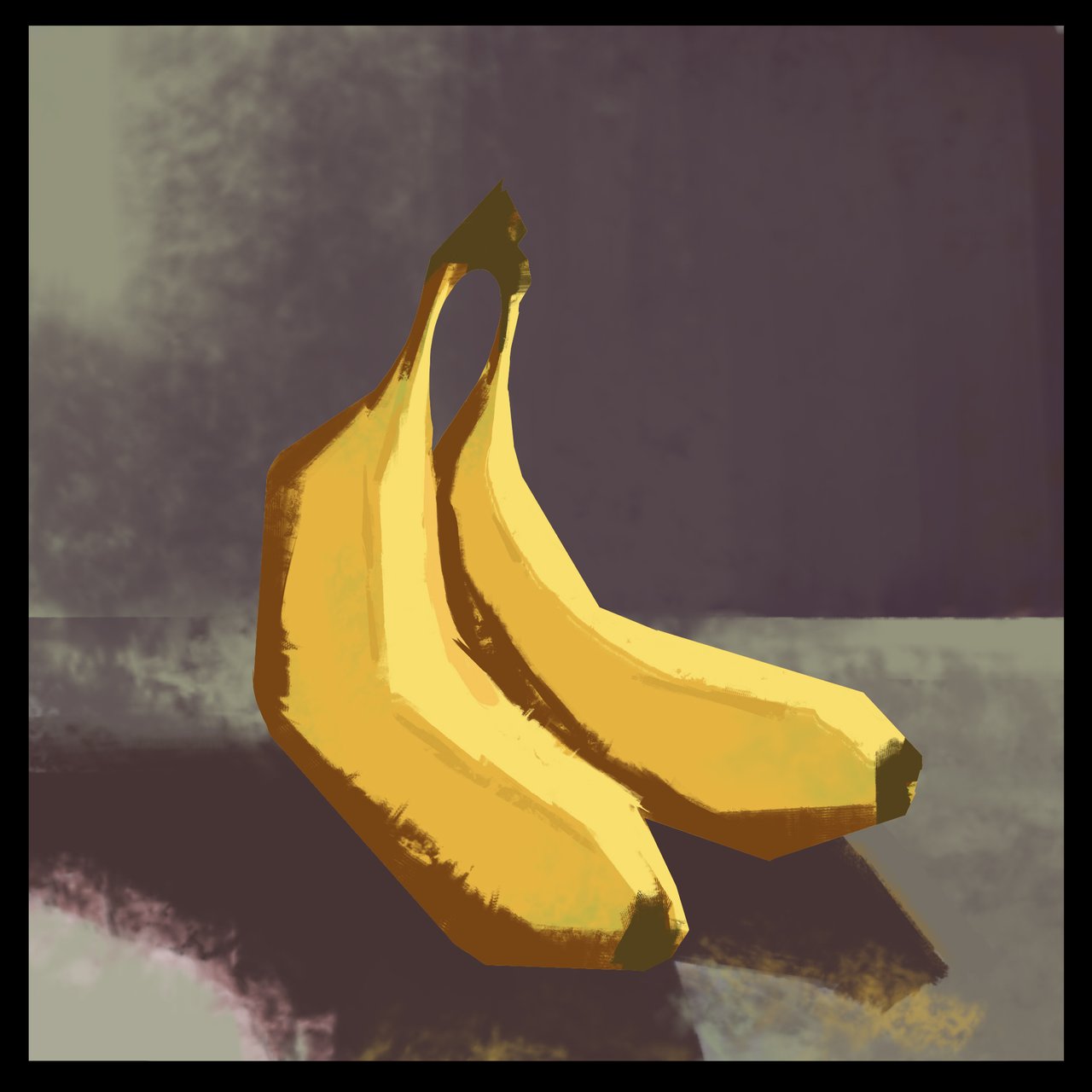
We're getting pretty close to the end so it's time to think about some of the final touches. I usually save my highlights, bounced lights and secondary lights for last. Because of the cube nature of this I'm only throwing that highlight along the edge before the shadow. I've opted again for a dim cool light coming from the left side so I'm putting that in very gently, not too much and with some texture to kind of sell the bumpiness of the banana skin. You'll also notice that there is a very grey color that I've thrown onto the bottom shadow side of the banana to show any bounced light coming from the surface the banana is sitting on.
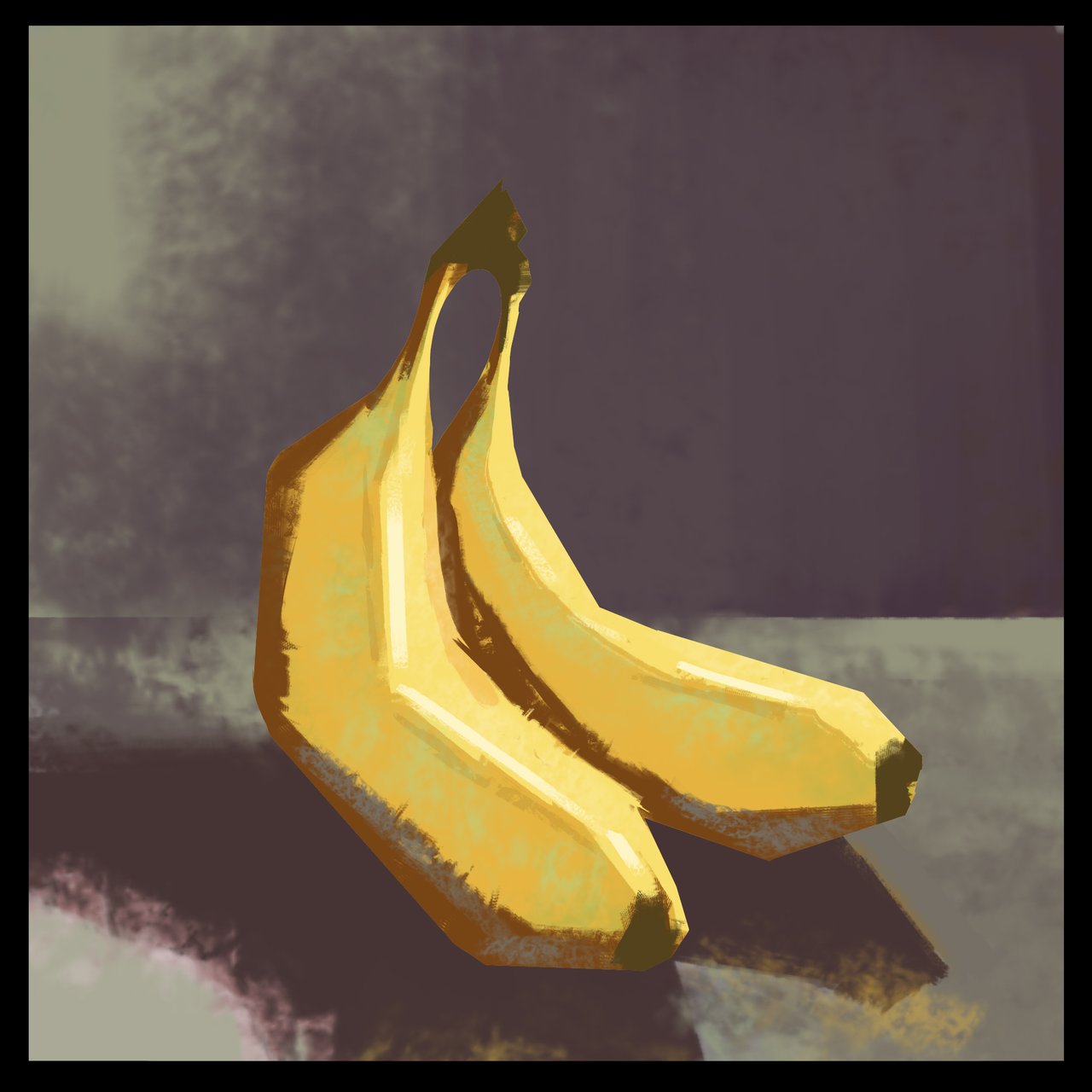
Whew! This has been a real test of our memory, I'm sure I'm missing things and nothing here is going to be absolutely perfect but we're basically there! I'm going to spend some time softening and smudging and blending the colors and shapes we have to clean things up. Afterward I'll add some of the details like the darker lines and dots I remember and that's a wrap!

So here we have banana #2, purely from memory. By doing this kind of practice we are training our brain to recall important information about shape, color, what light does to that color and what kind of brightness or texture we might see on an item. If this was a struggle for you, good! It's important to find out what we don't understand so that we can go back and work on it. If you weren't able to recall what to do to say banana without a reference then this is a good time to go back to the first study and repeat the exercise. Do this as many times as is necessary until you can paint a banana without looking at one, reference, without reference, reference, without reference.
Eventually you will know all of the little details that make a banana look like a banana and you won't need reference anymore. This is how to train our brains to remember and it will make you a stronger painter.
I you want to go over how I made some of these color choices in this study you'll find a basic primer here.
If you need help getting started drawing, I highly recommend you head over to @jorgevandeperre's blog and start following along his lesson plans. @jorgevandeperre has over 20+ exercises to get started and is even giving out rewards to students who complete homework!
